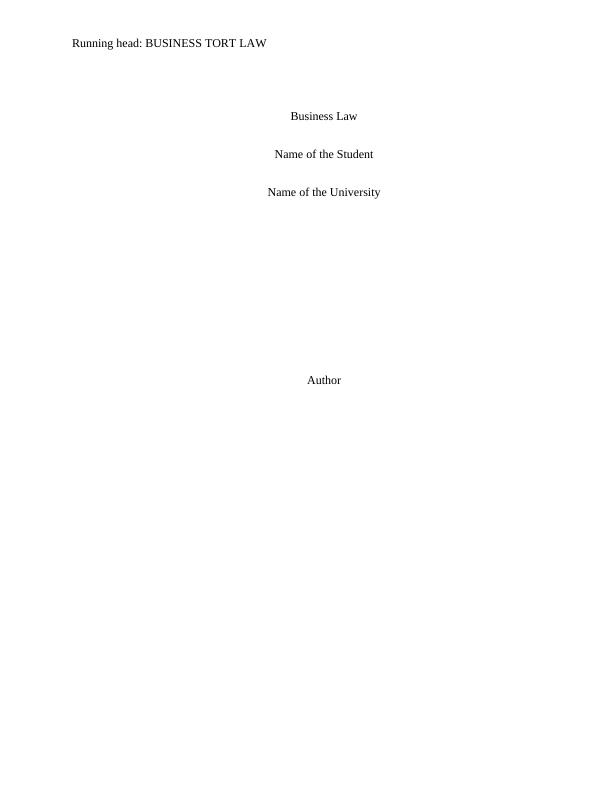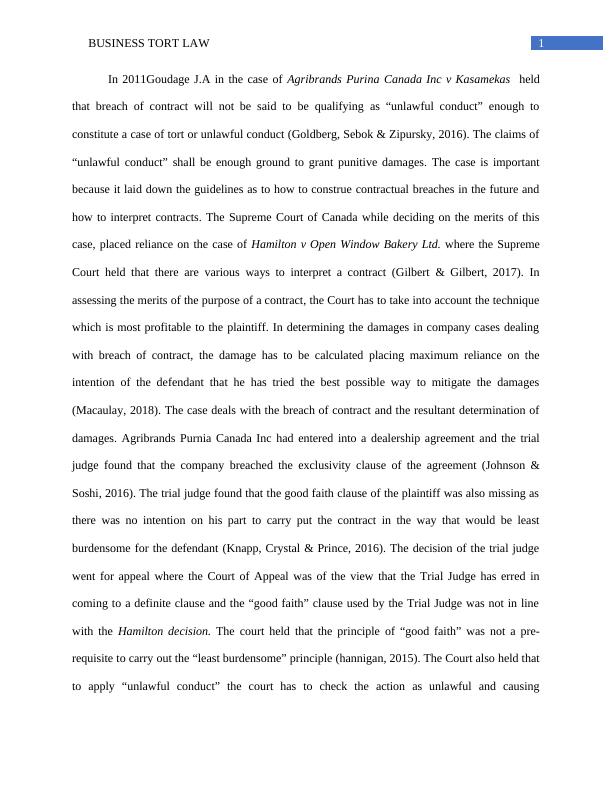Business Tort Law: Assignment
Added on 2021-05-31
4 Pages854 Words19 Views
End of preview
Want to access all the pages? Upload your documents or become a member.
Assignment on Contract Law (PDF)
|27
|4078
|141
Foundations of Business Law
|13
|3292
|239
The dispute has arisen between RBC Dominion
|5
|1595
|21
Critical Case Comment Assignment
|7
|1843
|86
Business Law Assignment
|8
|1734
|375
Discussion on Supreme Court of Indiana | Assignment
|2
|766
|313

